Sound:
The majority of my group chose to do composition 2 for our individual mood boxes because we really liked the sound of the metallophone ringing into the ‘void’. It was a better choice than the first that was just continuous sounds which did not provide any voids/breathing space. It would have been too cluttered. Plus we can’t create a city of voids without a void to begin with.
Final Model:

The zig-zaggie block is represented by a twisted wiremesh roll curling upwards because we felt that the sound was building up to the metallophone ‘ding’ at the end.
The metallophone is represented by a cotton ‘cloud’ as we favored my idea of metallophone as the sound of clouds. The cloud is peeking out of the box because we liked Fendi’s interpretation of the sound peeking out of the box as ringing into the void.
The rhythm sticks are directly translated with pairs of bamboo chopsticks intercepting the twisted wiremesh roll.
The banana shaker is represented by shards of blue acrylic because we felt that it sounds like rain. Thus, we hung them in a downward motion as if cutting through the void.
Production Process:
To save cost, we mainly used the materials found around the workshop.
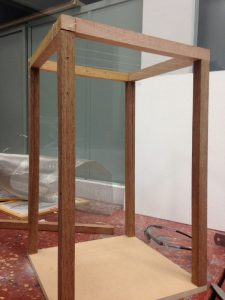
We made a frame out of some timber sticks to help suspend our model as sound is travels through space.
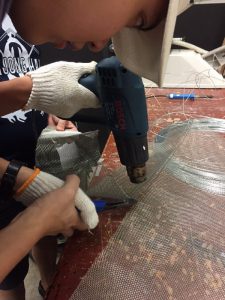
We chose to use wiremesh because it has a criss-cross texture. When scratched it produces a similar sound to the zig-zaggie block; achieving the acoustic effect that we wanted. We had to soften the wire with the heat gun and cut slowly because there was a problem with the wire cutter.
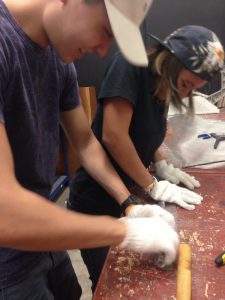
The wiremesh was really hard and rolling it took great effort.
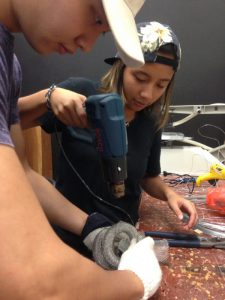
So, we used the heat gun to help soften it while we roll.
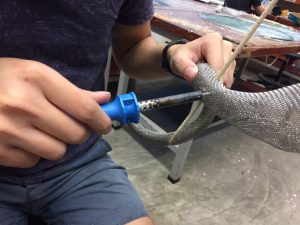
Since the holes were too small, we had to widen them with the soldering iron to fit the chopsticks.

We soldered holes into the acrylic shards to thread fishing line through them.
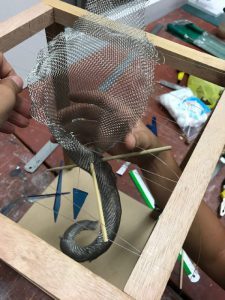
The top of the wiremesh opens up to look like its ‘fading’ into the void. The fishing line was nearly invisible and it gave the illusion that our model was floating. The wiremesh sat well in between the fishing lines. And we made sure that the acrylic shards were hung in a downwards motion; creating some rhythm at the same time for aesthetic purposes.

We used cotton balls as the cloud. Rolling them up, tearing them apart and putting them back together to get that fluffy effect. We also tried to make it fade in and out but somehow we could not get the desired results. The cotton couldn’t stand in place for a faded upward look.

Making sure all parts are covered and everything is in place.
Other perspectives:
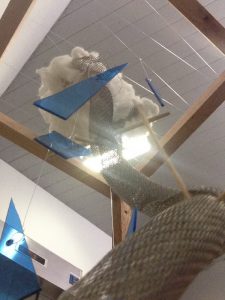
Here you can see how the wire-mesh rises and builds up to the cloud. You can also see the acrylic shards falling downward as well as the chopstick interrupting the void.
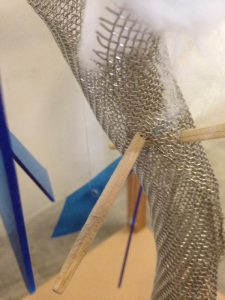
Prev: https://oss.adm.ntu.edu.sg/ytan149/city-of-voids-sketch-models/
Next: https://oss.adm.ntu.edu.sg/ytan149/obscure-city-of-voids-final-part-1-group/
